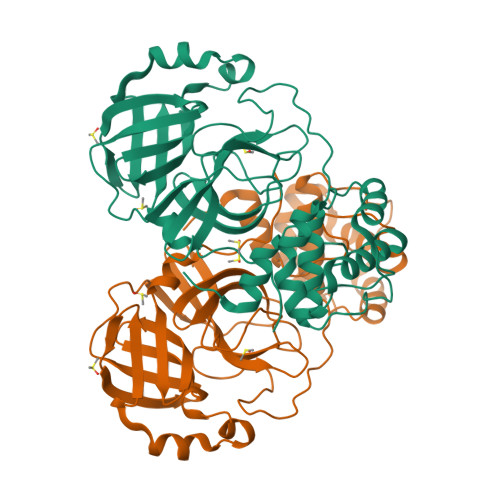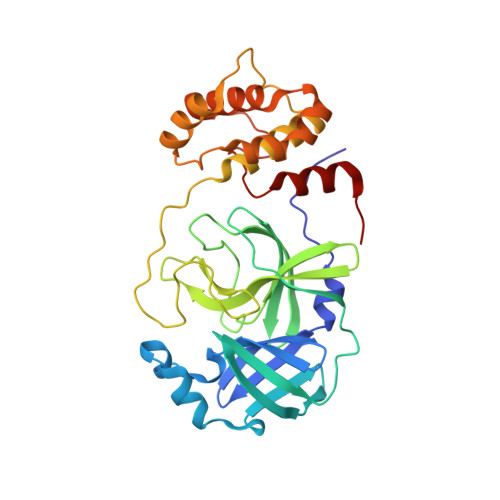Interaction of 8-anilinonaphthalene-1-sulfonate with SARS-CoV-2 main protease and its application as a fluorescent probe for inhibitor identification.
Deetanya, P., Hengphasatporn, K., Wilasluck, P., Shigeta, Y., Rungrotmongkol, T., Wangkanont, K.(2021) Comput Struct Biotechnol J 19: 3364-3371
- PubMed: 34109016
- DOI: https://doi.org/10.1016/j.csbj.2021.05.053
- Primary Citation of Related Structures:
7DJR - PubMed Abstract:
The 3C-like main protease of SARS-CoV-2 (3CL Pro ) is responsible for the cleavage of the viral polyprotein. This process is essential for the viral life cycle. Therefore, 3CL Pro is a promising target to develop antiviral drugs for COVID-19 prevention and treatment. Traditional enzymatic assays for the identification of 3CL Pro inhibitors rely on peptide-based colorimetric or fluorogenic substrates. However, the COVID-19 pandemic has limit or delay access to these substrates, especially for researchers in developing countries attempting to screen natural product libraries. We explored the use of the fluorescent probe 8-anilinonaphthalene-1-sulfonate (ANS) as an alternative assay for inhibitor identification. Fluorescence enhancement upon binding of ANS to 3CL Pro was observed, and this interaction was competitive with a peptide substrate. The utility of ANS-based competitive binding assay to identify 3CL Pro inhibitors was demonstrated with the flavonoid natural products baicalein and rutin. The molecular nature of ANS and rutin interaction with 3CL Pro was explored with molecular modeling. Our results suggested that ANS could be employed in a competitive binding assay to facilitate the identification of novel SARS-CoV-2 antiviral compounds.
Organizational Affiliation:
Center of Excellence for Molecular Biology and Genomics of Shrimp, Department of Biochemistry, Faculty of Science, Chulalongkorn University, Bangkok 10330, Thailand.



















